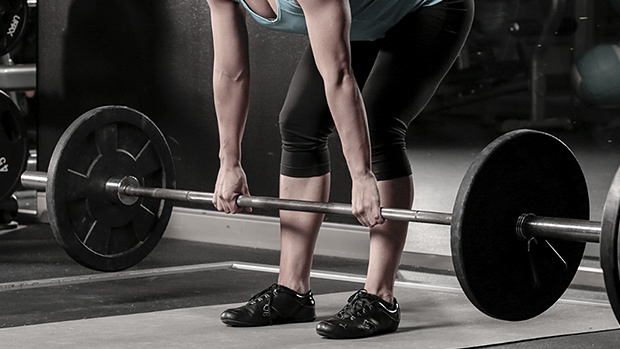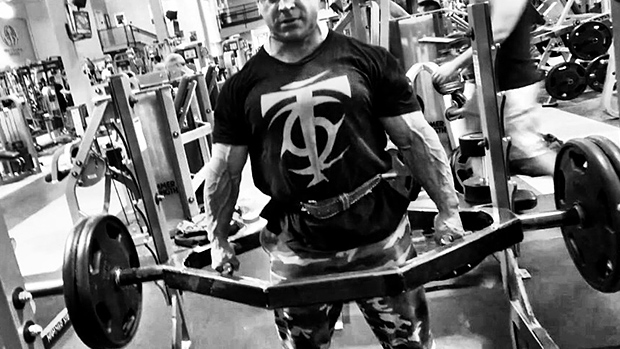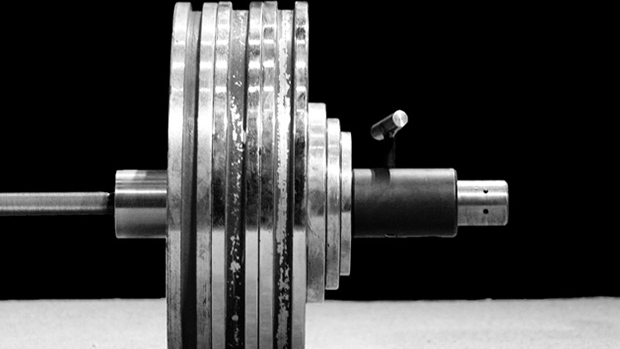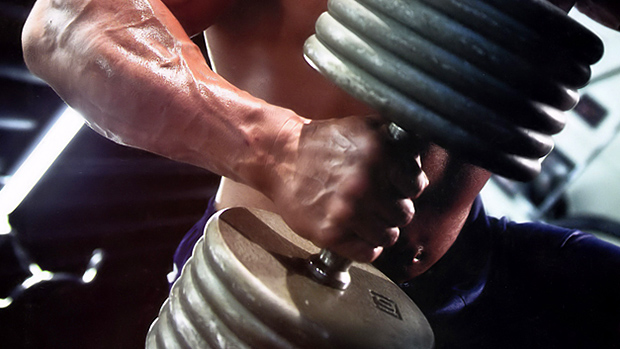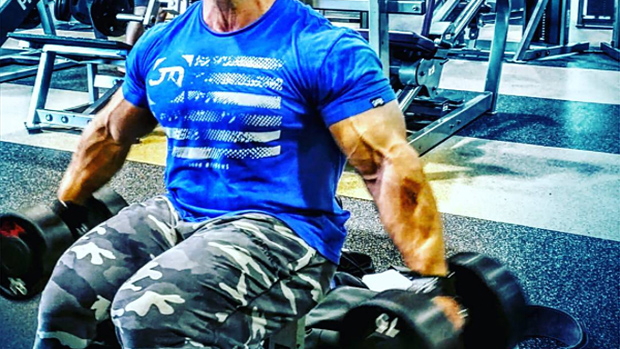Everyone is battling lower back pain these days. In fact, the active population is getting hurt MORE than the couch potatoes sitting at home doing nothing.
Why? Because we've lost the ability to develop and maintain our foundational movement patterns, the ones every person on earth should be able to execute to some extent. And the most neglected pattern is the hip hinge.
So if you're not doing it, add those hip hinge movements back into your training. But don't jump right into the standard barbell deadlift. First learn to stabilize, then groove and sequence the hip hinge from the top down using RDL (Romanian deadlift) variations.
The Reverse Band Romanian Deadlift
Attach circular resistance bands to the top of a power rack and place them under both collars of the barbell. This creates deloading, accommodating resistance in addition to the bar weight itself. It will lighten the weight at the end range of motion where the bar is closest to the floor, and create the heaviest weight at the top upon lockout into neutral.
Relearn and Ingrain
When relearning and ingraining new movement patterns, starting with the body in an neutral position (standing upright with a stacked posture in this case) is necessary. It's the easiest way to generate tension and brace yourself. Position your body to activate and stabilize key musculature and master bracing before dynamic movement takes place.
This is the biggest limiting factor when training the deadlift from the ground: the inability to create proper stabilization throughout multiple segments of the body at once while bending over in the starting position.
While this skill is of course useful, I view the bottom-up deadlift (floor to lockout at top) as a progression of the RDL variations that train the top-down approach from neural.
Once you learn to stabilize the shoulders, core, and hips, the next step in relearning the hip hinge pattern is to grade the range of motion eccentrically according to the maintenance of stability and neutrality.
While the spine has natural curvatures through the neck, mid, and lower back, a "neutral" spine refers to keeping three distinct points of neutral position together moving as a unit: the back of the head, the mid back, and the tailbone. In order to maintain a neutral spine and avoid compensatory range of motion and movement that comes from the joints instead of the soft tissues you're targeting, these three points must stay consistent.
This means you're only hinging through a range of motion in which you can maintain a neutral spine, and no further. This is why the RDL is a better option for hinge retraining. You can avoid pushing through destabilized ranges of motion that cause compensation instead of muscular action.
Once you've got that down and you're ready to add weight, one of the simplest ways to load the RDL is through reverse banding. This is a game-changer if you're reintroducing loaded movements and want to gain strength and size in the process.

